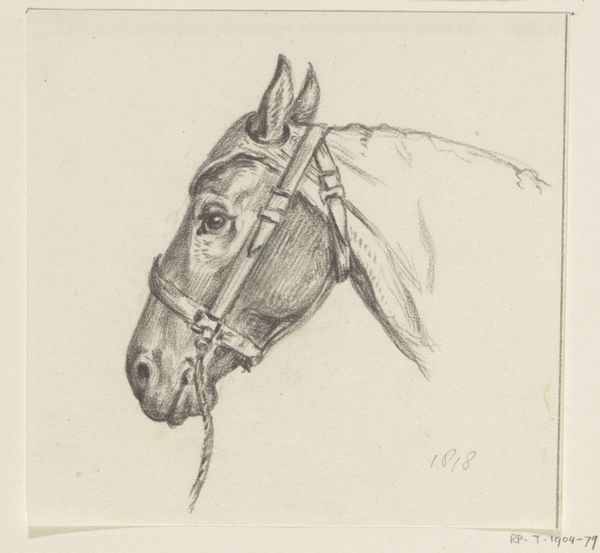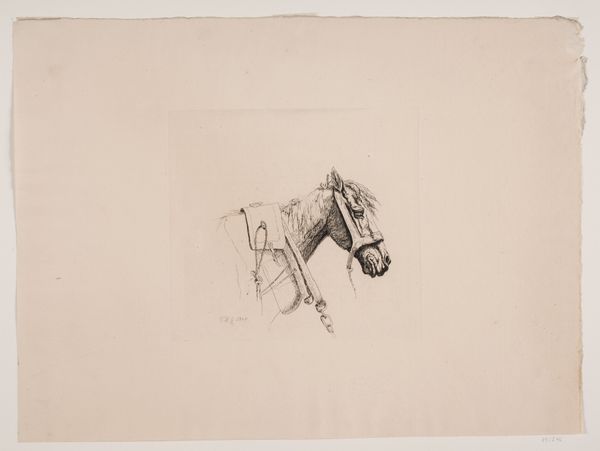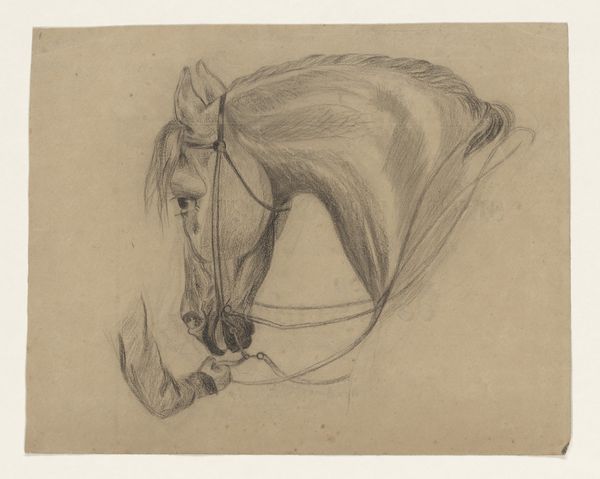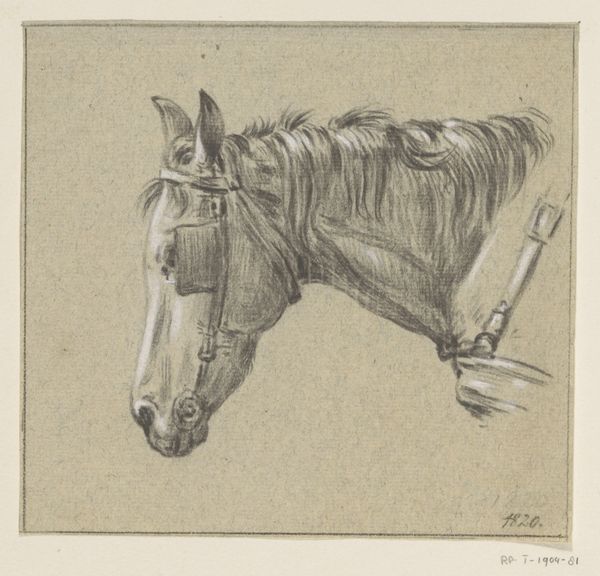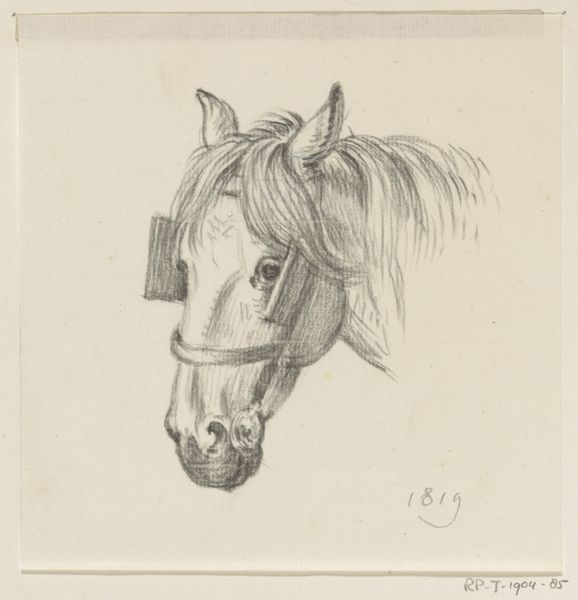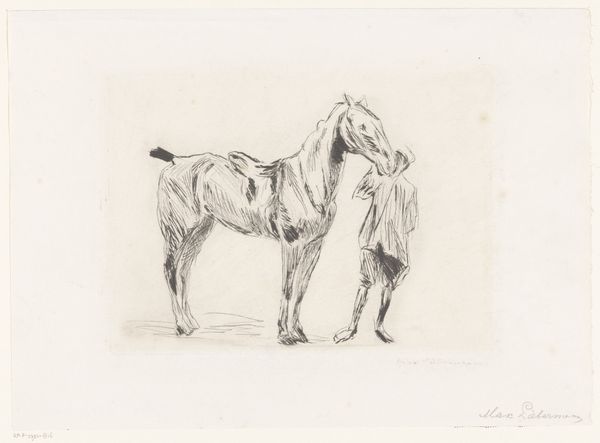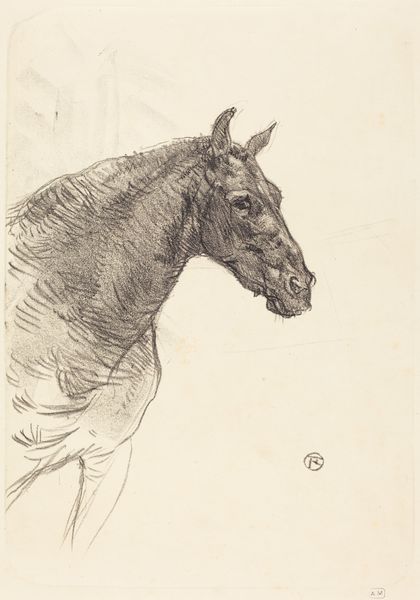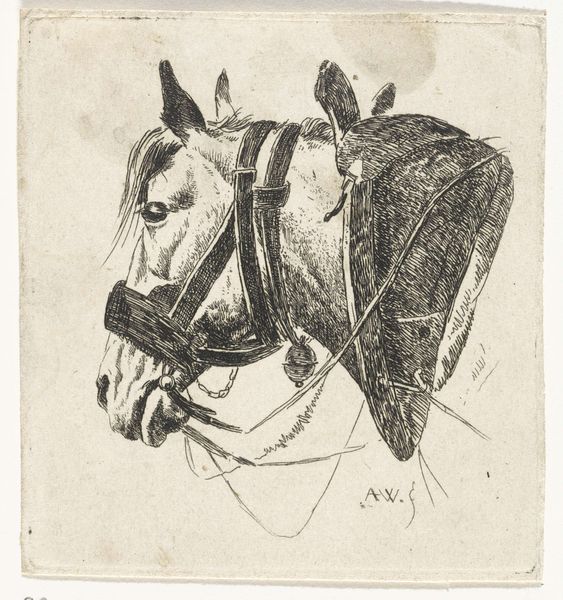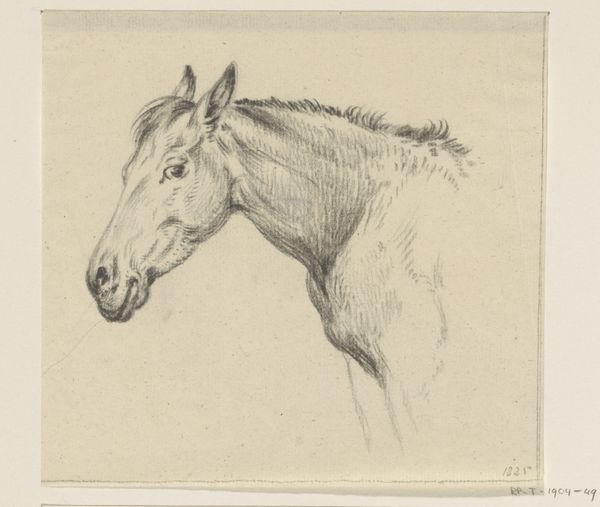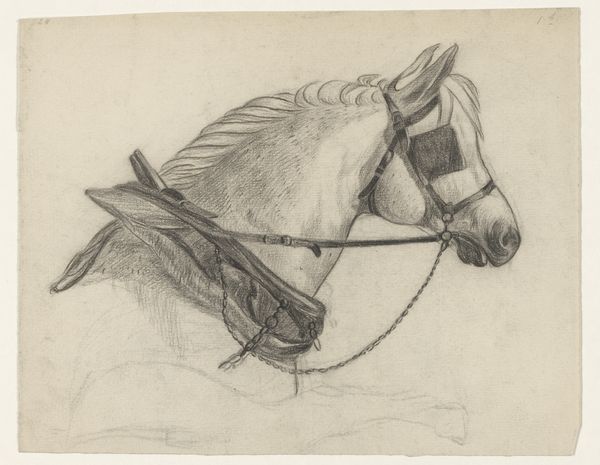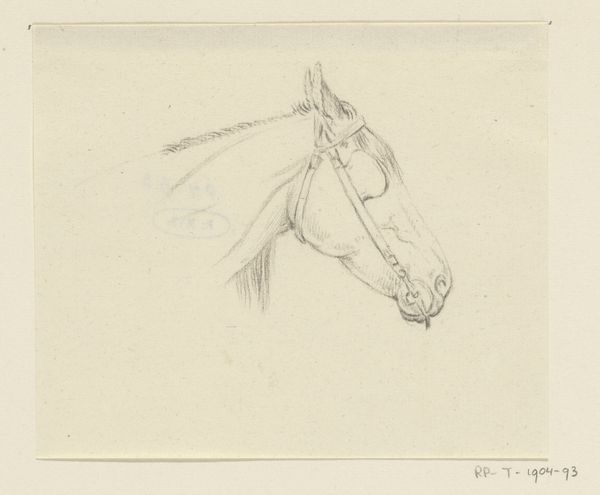
drawing, print, pencil, engraving
#
portrait
#
drawing
# print
#
pencil sketch
#
pencil
#
engraving
#
realism
Dimensions: 153 mm (height) x 170 mm (width) (bladmaal)
Editor: This is "Et hestehoved," or "A Horse's Head," a pencil and engraving work by Emmerik Høegh-Guldberg, created around 1849. It looks like a quick, almost technical study. What do you see in this piece? Curator: I see a convergence of artistic labor and utilitarian function. The detailed rendering of the horse's tack points to a culture deeply intertwined with animal labor. The material reality of 1849, with horses vital for transport and agriculture, shapes this image. Consider the economic investment in this animal, visible in the crafted leather and metal. It's a portrait, yes, but also documentation of working materials. Editor: So you're saying it's less about the horse's personality and more about…what it represents as a working animal? Curator: Precisely! It encourages us to consider the material conditions that frame our perception of even a majestic creature like this. Who owned the horse? Who made the equipment? What social class are they a part of? The engraving process itself involved labor. How does the medium influence how we perceive the subject and how the piece may have been consumed in the 19th century? Editor: I never considered that the materials could tell us so much about the context. So the choice of engraving, a replicable medium, might suggest wider distribution and use for practical purposes? Curator: Exactly. This isn’t just an image; it’s a record of a specific material relationship between humans and animals, captured and disseminated through the labor-intensive process of engraving. Think about the consumption of images, accessible through reproductive media. This challenges the Romantic ideal of the solitary artist expressing pure emotion and connects the artwork directly to a wider social fabric. Editor: This makes me rethink the whole piece! It’s fascinating how the artist's material choices can completely change how we interpret a seemingly straightforward portrait. Curator: Indeed, analyzing art through its materials provides such a valuable social commentary!
Comments
No comments
Be the first to comment and join the conversation on the ultimate creative platform.
